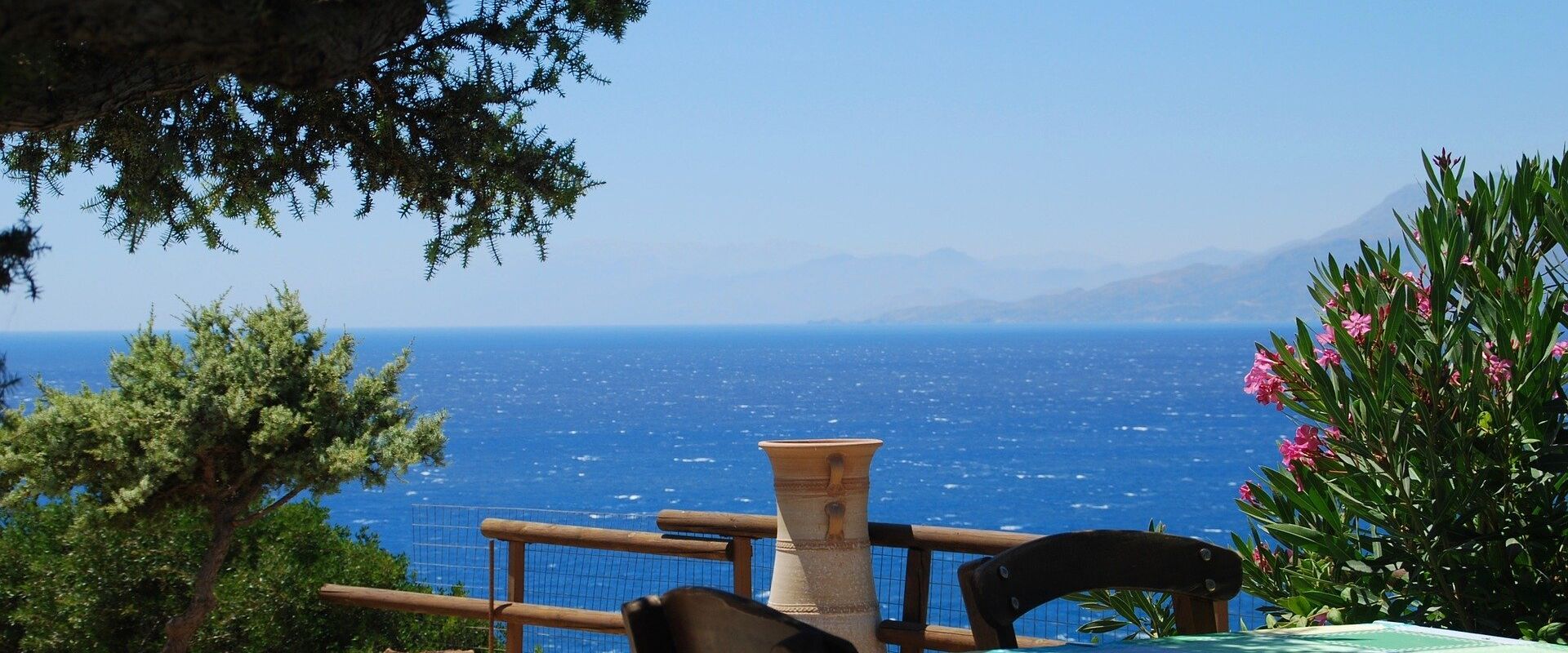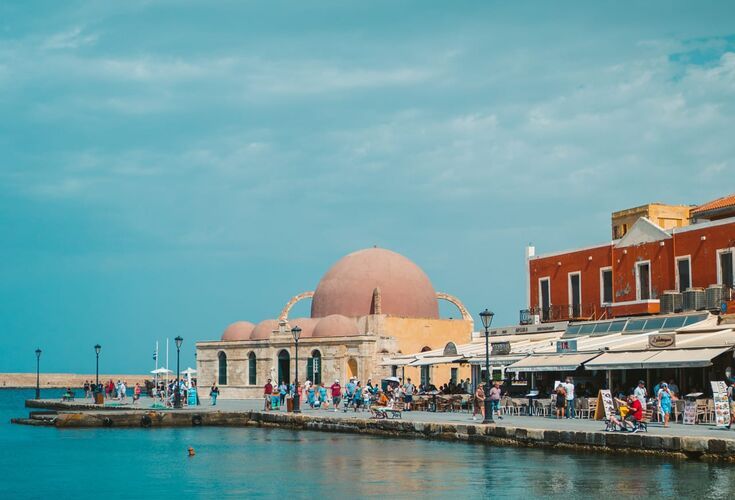If you’ve spent any time with us, you’ll know what Crete means to us. We’ve travelled everywhere on the island – from the White Mountains and coastline of Chania in the west, to the plateau and golden beaches of Lassithi in the east. We’ve found ourselves in a mitato (a traditional shepherd’s hut) in Rethymno and in a vineyard on the outskirts of Heraklion. Amazing experiences, all of them.
But what’s stayed with us, more than any memory, are the tastes. Not just because the food is delicious (and it is!) but because every bite seems to capture the spirit of the island.
Food, for Cretans, is a metaphor for everything they hold dear… open-armed hospitality, simplicity but also a depth of meaning, a long and proud history and a commitment to enjoying life.
Food as a way of life
It’s hardly surprising. Sustainability is at the heart of Cretan living. This, after all, is the land of the original Mediterranean diet, where fruit and vegetables star in so many dishes and locally-foraged greens are a staple. There are delicious dairy products from small livestock herders and enough olive trees to cover a third of Greece’s olive oil production. Fish and seafood are abundant and meat is celebrated.
Bottomless hospitality
Food and drink were, literally, our first impression when visiting. Down went the suitcases and out came a glass of tsikoudia (the local raki) and a massive smile from our host. And before we had even unpacked, we were presented with an array of mouthwatering morsels. We’d landed in Chania, so it was boureki – an amazing courgette and anthotyro (soft white cheese) pie, with potatoes and a shock of mint, topped with olive oil and sesame seeds.
It could have been kaltsounia from Rethymno or a pancake-shaped Sfakiani pie from Sfakia. Sometimes they’re drizzled with honey for that extra dose of sweetness. Whichever way, hospitality is a key ingredient.
Layers of flavour
Cretans seem to be able to add the characteristics of their island to everything they produce. There’s an irresistible simplicity to their food and yet so much meaning.
Take one of the most emblematic Cretan salads, the dakos. You don’t just eat it, you live the Cretan landscape through it. Chopped tomatoes packed with every last drop of Mediterranean sunshine. A sprinkling of dried oregano, representing the wild herbs (sage, thyme, marjoram…) from mountain walks. There’s the rusk on which all other ingredients sit, a perfect expression of how, even during Crete’s days of hardship, simple ingredients could still be packed with flavour. Topping the tomato is xynomyzithra, a tangy, smooth and salted white cheese. And for the finishing touch… extra-virgin olive oil. And lots of it.
Sometimes it’s a simple fruit or veg, or a piece of cheese that steals the show. Graviera, a hard yellow cheese found all over Greece, here imbued with a characteristic nuttiness. Or perhaps a slice of cured pork – synglino or apaki.
The range of produce is mad. There three different climates on Crete – Mediterranean, mountainous and tropical. Even bananas are grown here!
Recipes with deep roots
There’s a diversity that can be traced back through Crete’s long history. Many ingredients (pulses, wheat, honey, olive oil) go back more than 3,000 years to Minoan times.
Cretan winemaking certainly did, with more than 10 indigenous grape varieties in cultivation today. Many vineyards offer excellent wine-tasting and cellar tours.
And snails have become a particular delicacy. You have to try boubouristous (cochlious), memorable for their hit of rosemary.
Nothing is beyond the locals’ imagination. Of the more than 100 types of foraged green, each has its own notes of sweet or sour that bring out a particular taste in dishes.
Food as a celebration
The point is that Cretans don’t just consume food, the celebrate it. A dish of meat and rice at a wedding becomes gamopilafo (wedding pilaf), where lamb is slow-cooked in a broth and finished by stirring in the rice. Thankfully, it’s also on the menu at many tavernas.
It’s the same spirit with which locals gather each November in makeshift distilleries, known as rakokazana, to produce tsikoudia. Not only to mark the grape harvest but to bottle all that hospitality for the year to come.
It’s the same fun and generosity we encountered in Mountainous Milopotamos, where we joined a village festival (just about every saint’s day is an excuse for a party). Music, dancing, singing local mantinada folk songs … and lots of wine… long into the night.
But what brought it all together was the antikristo – lamb cut into four, seasoned with salt, passed through huge wooden skewers and placed around the fire in a way that can be traced back to ancient times.
Just the memory of the smells that night reminds us of everything we experienced and makes us want to head straight back and live them all over again.

